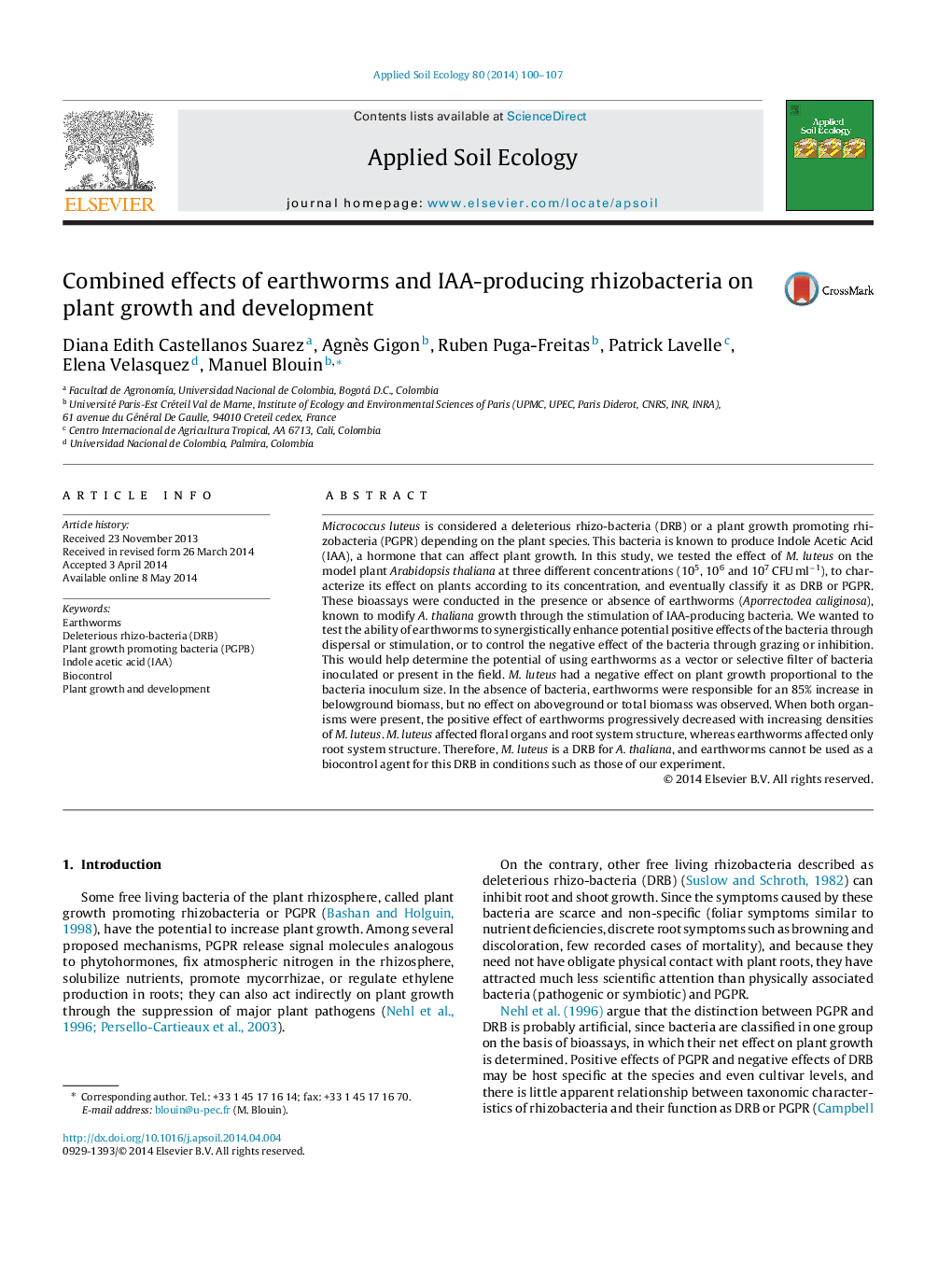| کد مقاله | کد نشریه | سال انتشار | مقاله انگلیسی | نسخه تمام متن |
|---|---|---|---|---|
| 4382137 | 1617803 | 2014 | 8 صفحه PDF | دانلود رایگان |

• The rhizosphere bacteria Micrococcus luteus affects negatively the plant A. thaliana.
• The earthworm Aporrectodea caliginosa affects positively the plant A. thaliana.
• The earthworm does not control the negative effect of M. luteus.
• An increasing dose of M. luteus causes the disappearance of earthworm’ effects.
• IAA production by M. luteus and bacteria activated by earthworm may be involved.
Micrococcus luteus is considered a deleterious rhizo-bacteria (DRB) or a plant growth promoting rhizobacteria (PGPR) depending on the plant species. This bacteria is known to produce Indole Acetic Acid (IAA), a hormone that can affect plant growth. In this study, we tested the effect of M. luteus on the model plant Arabidopsis thaliana at three different concentrations (105, 106 and 107 CFU ml−1), to characterize its effect on plants according to its concentration, and eventually classify it as DRB or PGPR. These bioassays were conducted in the presence or absence of earthworms (Aporrectodea caliginosa), known to modify A. thaliana growth through the stimulation of IAA-producing bacteria. We wanted to test the ability of earthworms to synergistically enhance potential positive effects of the bacteria through dispersal or stimulation, or to control the negative effect of the bacteria through grazing or inhibition. This would help determine the potential of using earthworms as a vector or selective filter of bacteria inoculated or present in the field. M. luteus had a negative effect on plant growth proportional to the bacteria inoculum size. In the absence of bacteria, earthworms were responsible for an 85% increase in belowground biomass, but no effect on aboveground or total biomass was observed. When both organisms were present, the positive effect of earthworms progressively decreased with increasing densities of M. luteus. M. luteus affected floral organs and root system structure, whereas earthworms affected only root system structure. Therefore, M. luteus is a DRB for A. thaliana, and earthworms cannot be used as a biocontrol agent for this DRB in conditions such as those of our experiment.
Journal: Applied Soil Ecology - Volume 80, August 2014, Pages 100–107